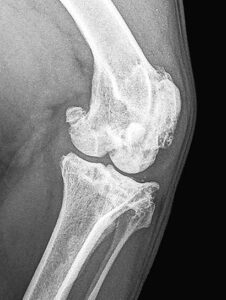As a local veterinarian, it’s crucial to shed light on a common yet often overlooked condition affecting furry companions in our community: arthritis. While it’s more obvious to notice in dogs, arthritis is also prevalent in cats, with subtle signs that pet owners may not readily recognize. Understanding the prevalence, signs, and treatment options for arthritis can significantly improve the quality of life for our beloved pets.
Recognizing the Signs:

Arthritis is a degenerative joint disease that affects dogs and cats of all ages, though it’s more commonly seen in older pets. While the signs may be less obvious in cats, studies show that up to 90% of cats over the age of 12 have radiographic evidence of osteoarthritis. In dogs, arthritis is equally prevalent, especially in larger breeds and those with a history of joint injuries or genetic predispositions.
Signs of arthritis in dogs are often more apparent, including limping, stiffness, difficulty rising or lying down, and reluctance to engage in physical activities. However, in cats, the signs can be subtler, such as decreased mobility, reluctance to jump on high surfaces, and hesitancy when going up or down stairs. Pet owners may mistake these signs for normal aging, overlooking the underlying joint pain.
Managing Joint Pain:
Arthritis-related pain can be debilitating for pets, impacting their mobility, comfort, and overall well-being. Fortunately, there are various treatment options available to alleviate pain and improve joint function. Joint supplements containing glucosamine and chondroitin, along with fish oil rich in omega-3 fatty acids, can help support joint health and reduce inflammation.
For pets experiencing moderate to severe joint pain, pain-relieving and anti-inflammatory medications may be necessary. These medications can provide significant relief by reducing inflammation and easing discomfort. However, it’s essential to work closely with a veterinarian to ensure proper dosing and monitor for any potential side effects.
In recent years, there have been advancements in arthritis treatment, including innovative therapies such as Solensia and Librela. These newer antibody therapies target specific molecules involved in the inflammatory process, providing targeted relief for pets suffering from arthritis. Veterinary professionals are seeing remarkable results with these therapies, offering new hope for pets with chronic joint pain.
Seeking Veterinary Care:
If pet owners have any concerns about their dog or cat experiencing joint pain, it’s essential to schedule a thorough examination with their local veterinarian. A comprehensive evaluation can help identify underlying joint issues, determine the severity of arthritis, and develop a tailored treatment plan. Early intervention is key to managing arthritis effectively and improving the quality of life for pets.
By recognizing the signs and seeking veterinary care promptly, pet owners can help alleviate joint pain and improve their pet’s quality of life. From joint supplements and pain medications to innovative therapies, there are numerous options available to manage arthritis and provide relief for our beloved companions. The veterinary community is committed to supporting pet owners in navigating their pet’s arthritis journey, ensuring that every pet receives the care and attention they deserve.






















